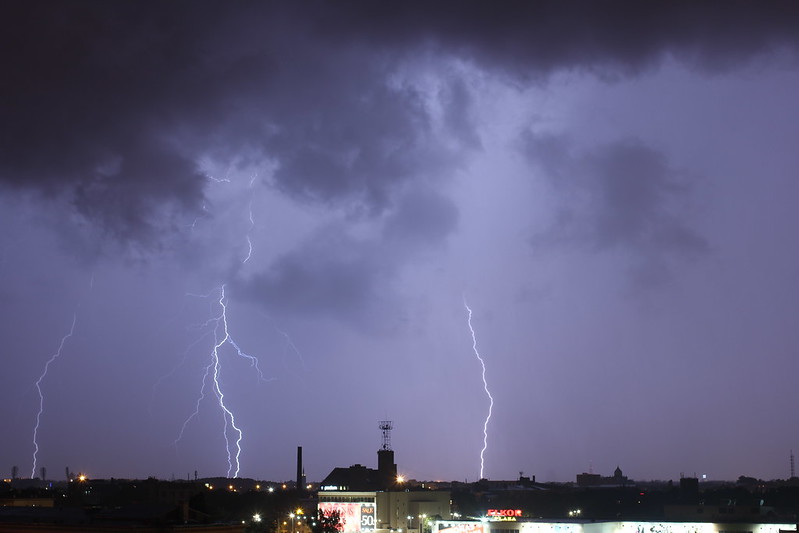Fun with the new camera
So, I finally received my Canon 650D and Canon EF 40mm STM lens. I am very happy with the purchase. The STM lens is very, very compact, it is barely bigger than the lens cap that comes with the camera. The focusing is fast enough and it is very smooth and silent enough not to be audible in video mode. The largest bonus of the 650D compared to my old 550D is the articulated display. It has come in handy many times already. It is especially useful with the STM lens, live view and touch to focus function. Very useful to focus on something even when the camera is at an weird angle.
And a couple days ago I got to really use the new camera capturing the shot above (an others in that set). It turns out capturing cool lightning shots is quite easy:
- Get a great vantage point. In my case that was my apartment balcony. I actually chose this particular place specifically because of the great views in two different directions from the large windows. But really any high point with a roof will do
- Setup you camera on a tripod in the general direction of the incoming storm, frame the shot to include some ground in the shot, so you get the sense of scale and perspective
- Get a focus lock on either the horizon or some far away building an then switch to manual focus to preserve that. You want the lens focused to "infinity" as the action will be outside the normal focus range of most lenses
- Set manual mode, 5-10 second exposure, aperture (F) to 8 or above, no flash, iso 100
- Take a test shot, make sure you bracketing is ok, make sure that the sky is dark or black without the lightning, but that if there are any lights from buildings that those are bright and clear and sharp
- I use 5 second exposures. If you set it longer, you will get less shots to check and more chance of more than one lightning per shot, but you will then have to up the aperture to avoid overexposure and you do not want aperture over F16, because then you will loose detail due to diffraction in the lens. If it is too dark, either increase exposure time, or up the iso to 200, but do not lower F under 8, otherwise you risk out of focus shots.
- Disable long exposure noise reduction - this feature works by taking another photo with the shutter closed, that will take extra time the same length as your exposure time, which means that you will miss half the lightning strikes
- Find some way to make the camera shoot continually without your action. I switched my camera to continuous shot mode and then used a bit of duck tape, a couple zip ties and a plastic nob to press the shutter button and keep it pressed down fully all the time. This makes the camera take a new shot as soon as it is done with the last one, so with a 5 second exposure it takes a photo every 5 seconds.
- Make sure you have plenty of space on the card and a full battery. I had a 32Gb SD card, but I barely shot 8Gb in one stormy evening
- Watch the show! Do not forget to adjust the way the camera is pointing as the storm moves. There is a splitsecond window where the camera viewfinder shows the image between the shots, you can use that to make sure that the shot is looking good after adjusting the camera location.
- After all is done, just filter out the pictures with some lightning in them :) It is usually easy to see even in a thumbnail
It is basically the same as shooting photos of a fireworks display, with the exception that lightning is not so bright sometimes and that there is a high chance of rain in a thunderstorm ;)
P.S. Got over 5k photos in Flickr now with this set, and closing in for 500k views. That feels cool :)
